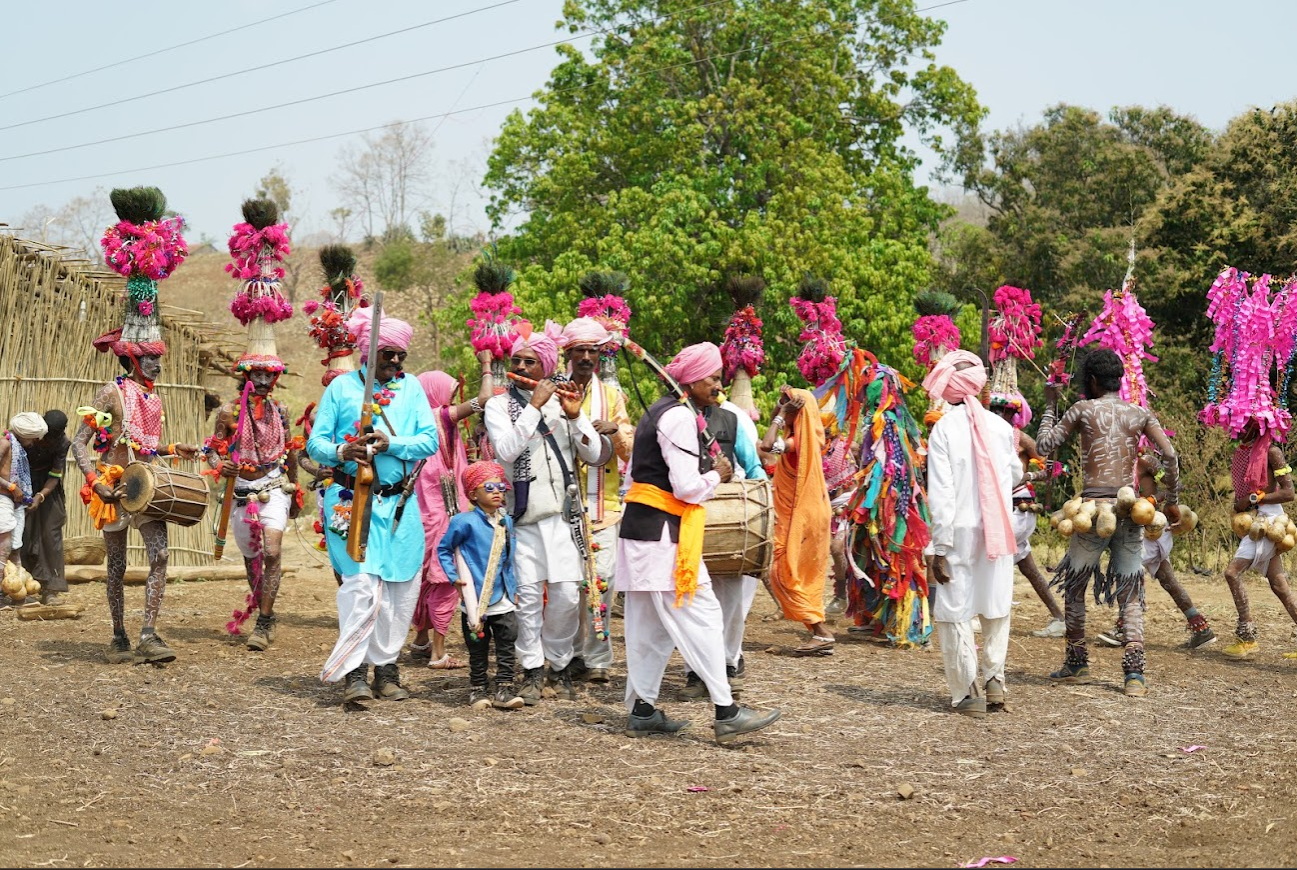
Themes
tribal dance
Holi dance (Dindan Dance), maharashtra
The Bhil are one of the largest Indian tribal communities, living in the regions of spoken Marathi, Gujarati, Rajasthani and Hindi languages. The community's Bhili dialect is hence influenced by each of these languages. The term Bhil is derived from Veel, billu or billa; which means bow. The Bhils are skilled archers, and earlier bow and arrow were utilized, not only for hunting; but also to protect land against invaders such as the Mughals, Rajputs and British.


Identified as a scheduled tribe, the Bhils reside primarily in Dhule and Nandurbar districts of Maharashtra, near the borders of Gujarat and Madhya Pradesh. The Bhils are nature worshippers and their gods are a pantheon of the natural world, village goddesses and a few Hindu gods. They are mostly agriculturalists and observe festivals such as Akhatij, Diwasa, Dashera and Holi. These are festivals when fairs are held; and the Bhil people come together to sing and dance.
Holi festival is marked in the months of March-April. Holi is a close event for the Bhils. Taking a step to the lively rhythm of drums, the Bhil reinforce their bond with nature and gods; preserving an essential aspect of their vibrant cultural heritage through a blend of religion and festivity; so that it remains forever in many generations to come. Drums, gongs and flutes blend their merry notes, as the waist and foot bells ring in rhythm with the beats. As they speed up, the dancers shift step, and soon the women join in the festivities too. Fairs during Holi are a time for Bhil youth to gather and choose life partners. Several proposals are accepted here, and marriages take place in summer.


Three days prior to the festival, the Bhils gather stones called chunkhadi. These are submerged in water and are ground to form white paint. They paint their bodies and faces, and wear tall headgears embellished with peacock feathers and paper. Their clothes are adorned with tassels and bows. Anklets and waistbands of bells and dried gourd are a part of their traditional dress. Based on the community, aside from the dancers with bells and white body makeup; there are a couple of other dresses put on for the dance. There are those dancers who put black face makeup, dancing in winnows. Others bear the bow high and wear masks. There are not many wearing female clothes. Only men who have vowed may put on the bright clothes and dress like women or animals. The remaining Bhil men, especially the musicians, dress in colorful jackets, sunglasses and turbans. They wear small knifes tied to their waistbands. Women tend to wear clothes of the same shade, which indicates that they all belong to the same village. Clutching weapons in hand, they dance to the beat played by age-old instruments such as the Dhol, Thali, Mandal and Bansuri.

